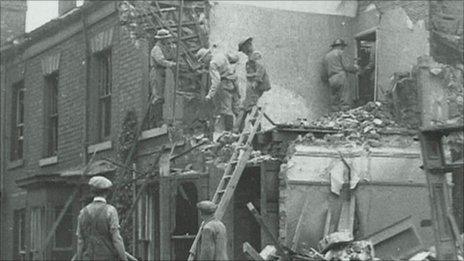Voices from the Hull blitz in schoolgirls' WW2 letters
- Published
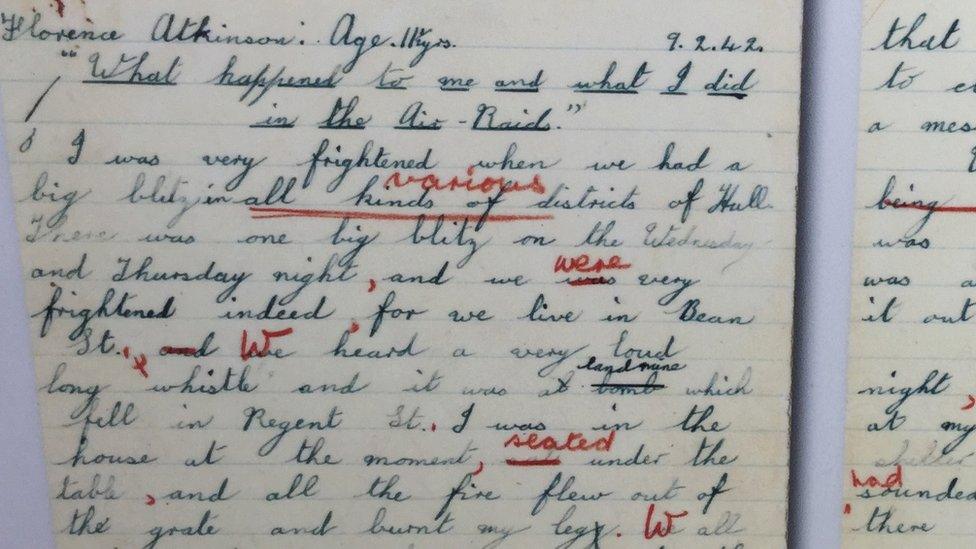
Florence Atkinson spoke of being "very frightened"
Moving letters written by schoolgirls who lived through the blitz in Hull have gone on display in the city.
The letters by the 11-year-old girls written in February 1942 describe life in the heavily-bombed port.
Martin Taylor, the city archivist, said of the collection: "It's a good story and it's an important story."
Edna Fewster wrote: "I felt as though I could just go across to Germany and punch Hitler and his Nazi gang in the jaw."
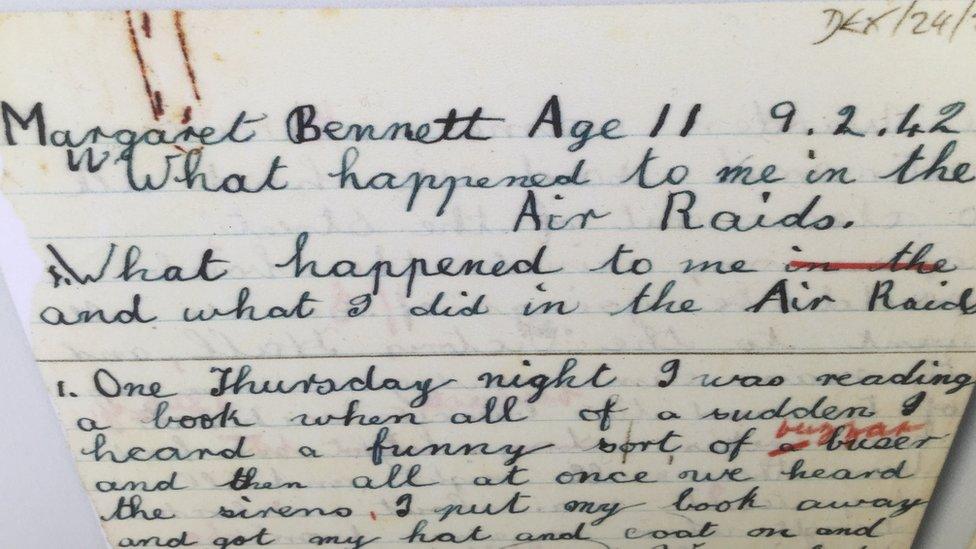
Magaret Bennett, 11, was reading a book when she heard the "buzzer"
The essays entitled 'What happened to me and what I did in the air raid' were written in response to concerns about the morale of a civilian population exposed to heavy bombing.
Nancy Nunn said: "But we still keep smiling through and try to forget these dreary nights. It made my nerves terrible."
Vera Stephen wrote: "Hull will never lose her spirit whether there are raids or not."
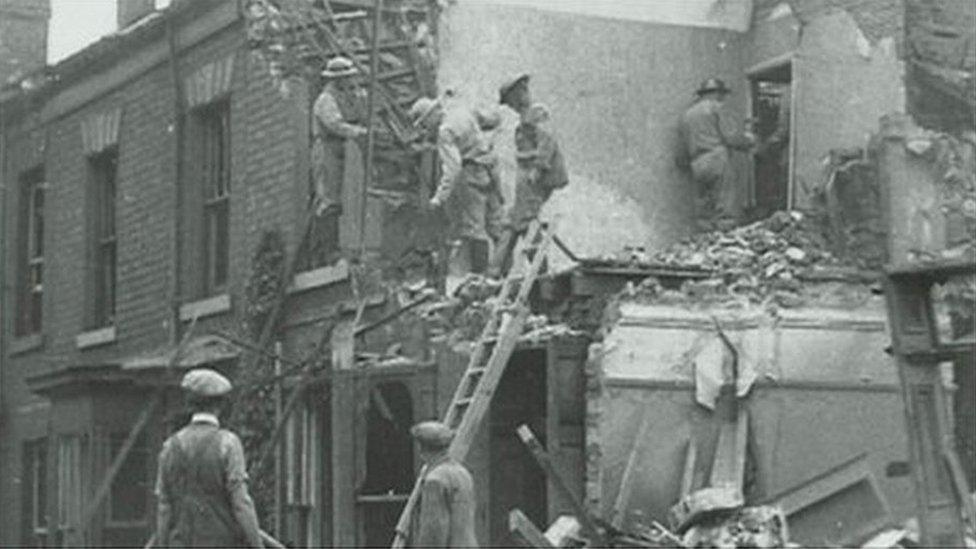
More than 86,000 homes were damaged during the Hull blitz

Hunter Street, Wesley Chapel in the city was destroyed in one raid
The letters, full of a teacher's red pen corrections, were given to Hull History Centre and are on display in the building's foyer.
They describe rushing to air raid shelters, evacuation, land mines, incendiary devices and bombs raining down.

"The street was covered with, bricks ,tiles, shrapnel," according to one schoolgirl
Sylvia Palmer wrote: "My brother was just coming out of the door and an incendiary bomb fell right in front of him, so he got out a bag of sand and put it out. We all went to bed..."
Ida Ilsworthy said: "At the top of our street the fire was burning for four days..."
A further 2,000 essays written by Hull children have been loaned by University of East Anglia to the history centre.
About 12 schools in Hull wrote about bombing as did two in Birmingham, Mr Taylor said.
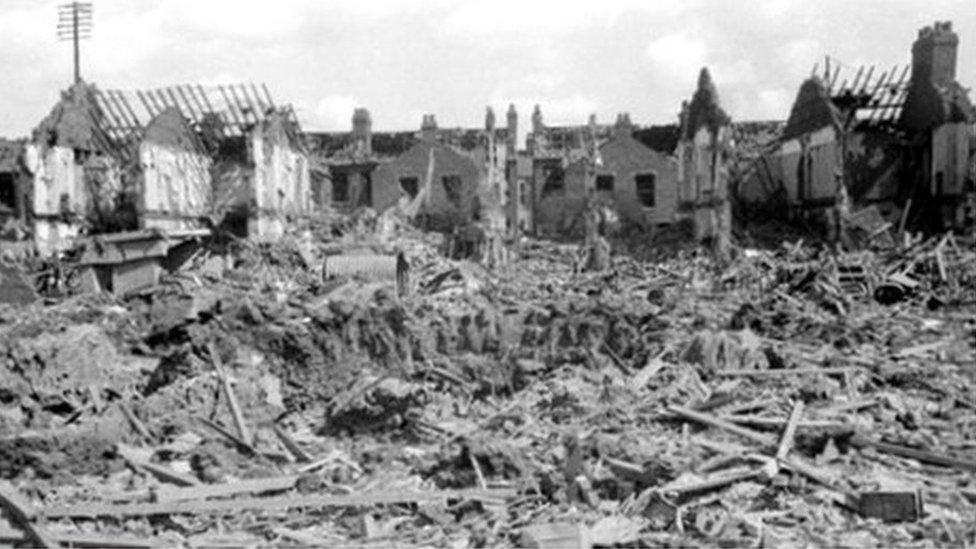
Damage in Bean Street where Florence Atkinson lived
Hull suffered its first daylight raid in June 1940 and its last attack was in March 1945.
The majority of bombing raids on the city took place during 1940 and 1941.
Hull blitz in numbers:
•People killed 1,200
•People injured 3,000
•People homeless 152,000
•Houses damaged 86,715
Source: A North-East Coast Town - T Geraghty
- Published17 March 2015
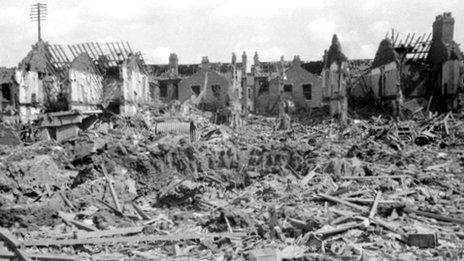
- Published15 November 2012
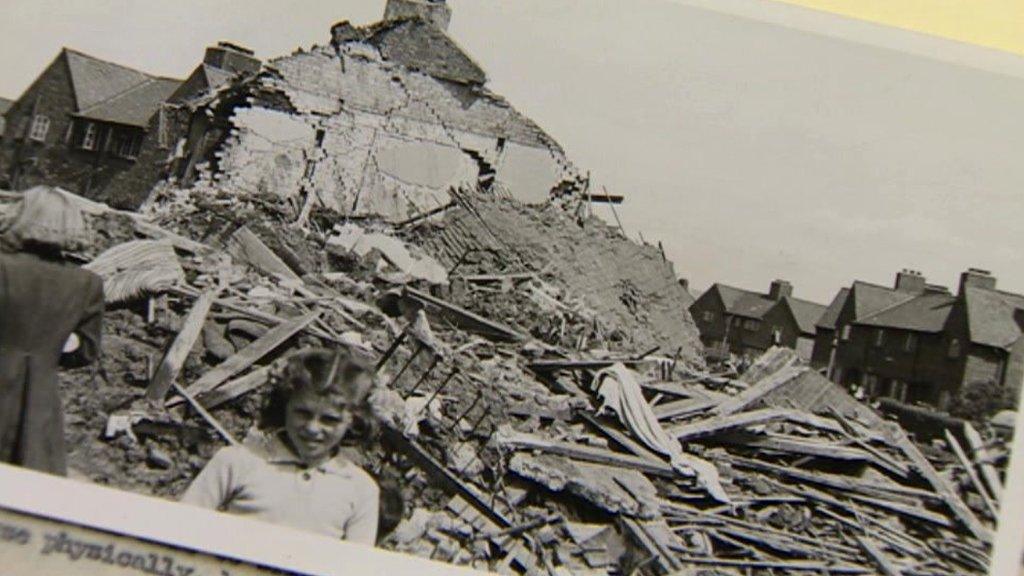
- Published1 March 2012

- Published5 May 2011
